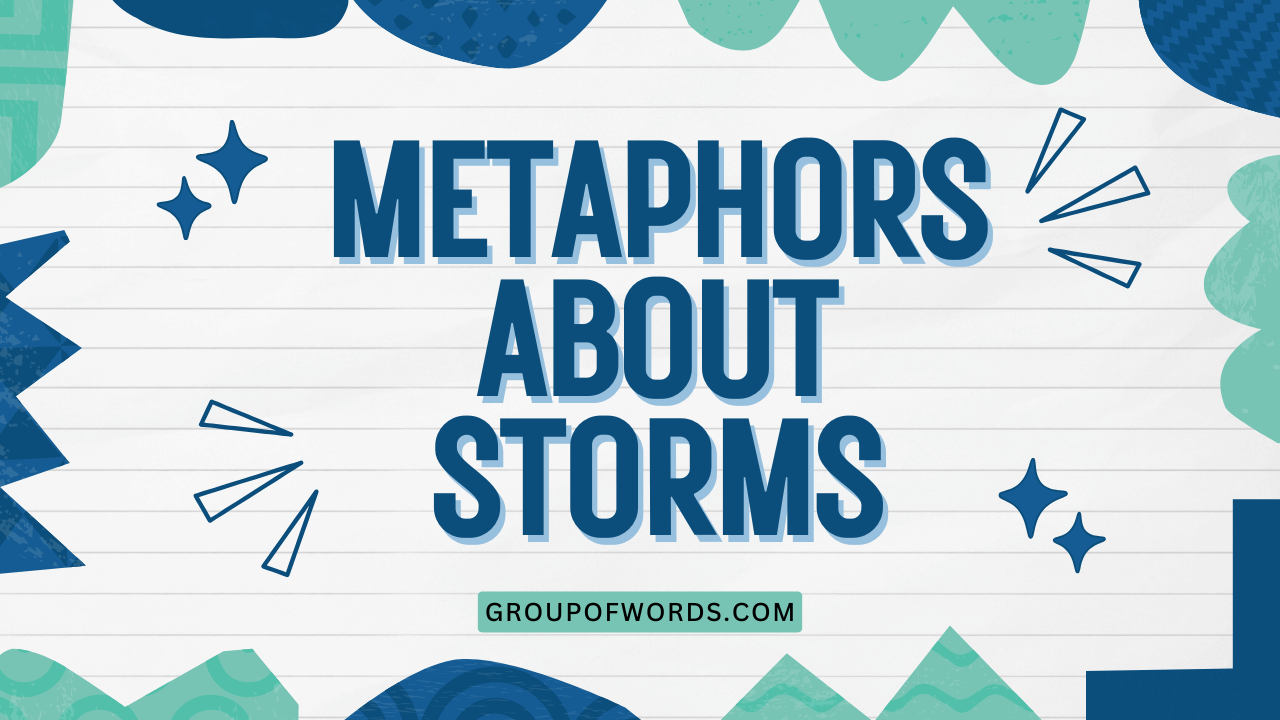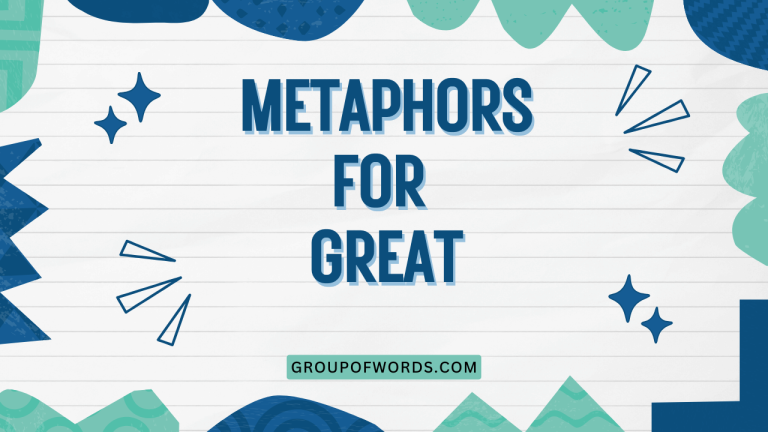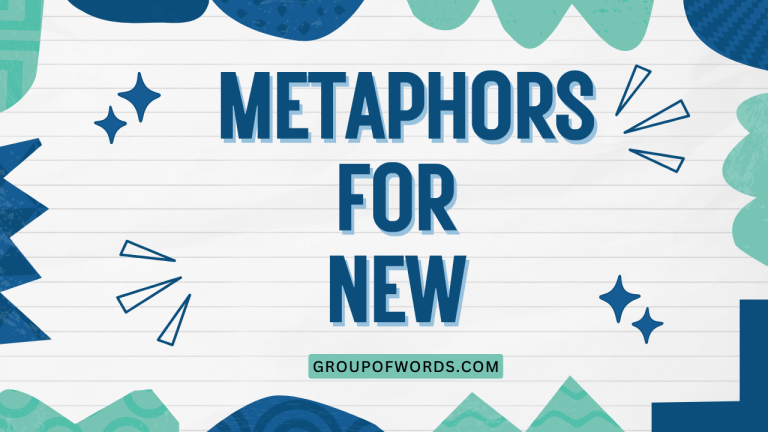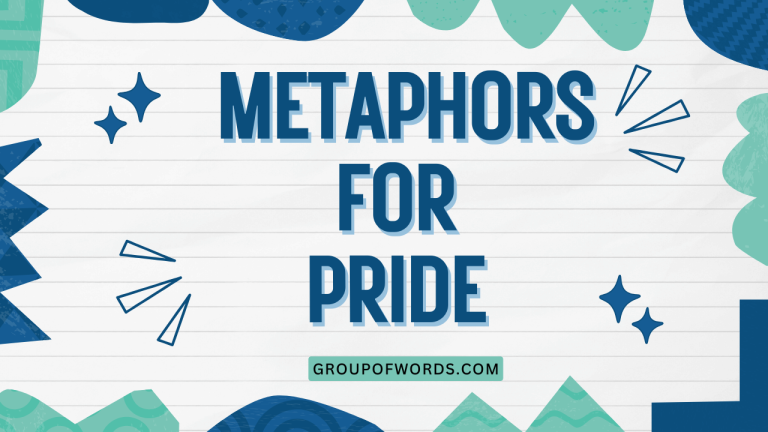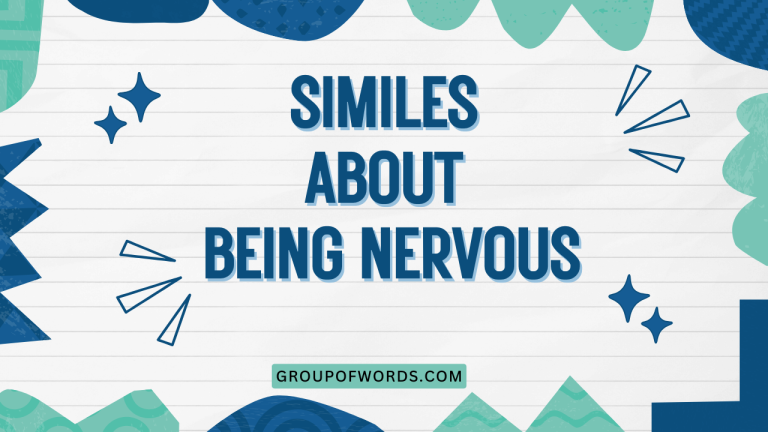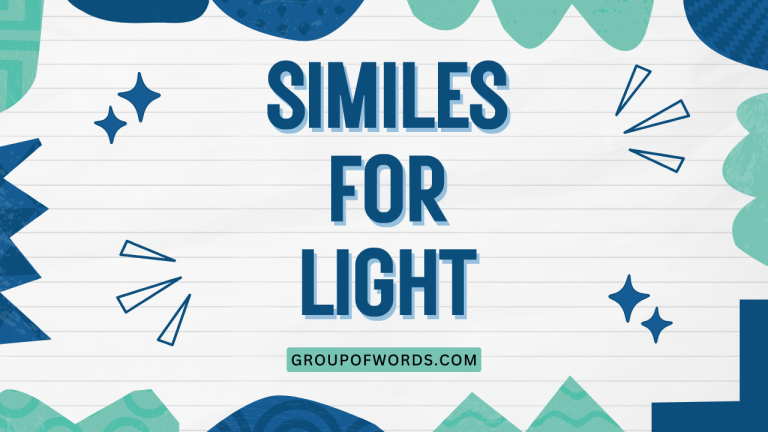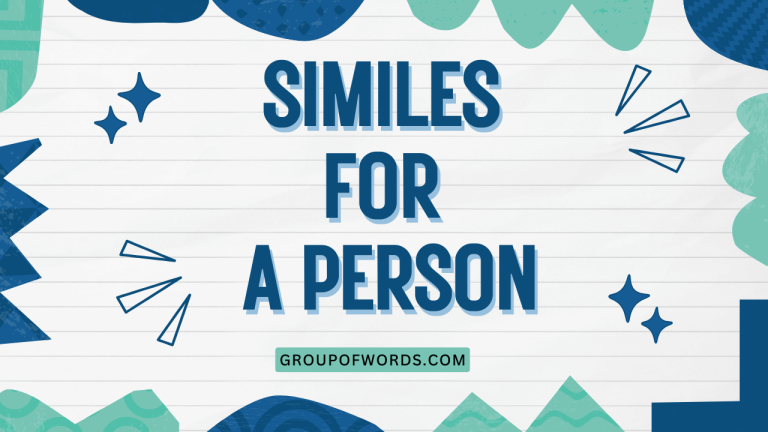Navigating the Tempest: Understanding Metaphors About Storms
Metaphors are powerful tools in the English language, allowing us to understand abstract concepts by relating them to more concrete experiences. Storms, with their dramatic displays of power and chaos, are a frequent source of metaphorical imagery.
Mastering the art of interpreting and using these storm-related metaphors can significantly enhance your understanding of English literature, improve your writing skills, and deepen your ability to communicate effectively. This article will guide you through the intricacies of metaphors about storms, exploring their meanings, structures, and usage, suitable for learners of all levels.
Whether you’re a student aiming to improve your essay writing, a professional looking to add flair to your communication, or simply an enthusiast eager to explore the nuances of the English language, this comprehensive guide will equip you with the knowledge and skills to navigate the metaphorical tempests with confidence.
Table of Contents
- Introduction
- Definition of Metaphor and Storm Metaphors
- What is a Metaphor?
- Storm Metaphors Defined
- Classification of Storm Metaphors
- Structural Breakdown of Storm Metaphors
- Source Domain: The Storm
- Target Domain: The Abstract Concept
- Linking the Domains
- Types of Storm Metaphors
- Emotional Turmoil
- Social Upheaval
- Personal Challenges
- Political Instability
- Examples of Storm Metaphors
- Emotional Turmoil Examples
- Social Upheaval Examples
- Personal Challenges Examples
- Political Instability Examples
- Usage Rules for Storm Metaphors
- Appropriateness and Context
- Clarity and Relevance
- Avoiding Clichés
- Common Mistakes with Storm Metaphors
- Mixed Metaphors
- Overuse of Storm Metaphors
- Misinterpretation of Intent
- Practice Exercises
- Exercise 1: Identifying Storm Metaphors
- Exercise 2: Interpreting Storm Metaphors
- Exercise 3: Creating Storm Metaphors
- Advanced Topics in Storm Metaphors
- Extended Storm Metaphors
- Storm Symbolism in Literature
- Frequently Asked Questions (FAQ)
- Conclusion
Definition of Metaphor and Storm Metaphors
To understand storm metaphors, we must first define what a metaphor is and then delve into the specifics of how storms are used metaphorically in the English language.
What is a Metaphor?
A metaphor is a figure of speech that directly compares two unlike things without using “like” or “as.” It asserts that one thing *is* another, creating a vivid and often insightful connection. Metaphors are used to explain complex ideas, evoke emotions, and add depth to writing and speech. They work by transferring qualities or characteristics from one thing (the source) to another (the target) to shed new light on the target.
For example, saying “He is a lion” is a metaphor. It doesn’t mean the person is literally a lion, but it suggests they possess lion-like qualities such as courage, strength, and leadership.
Storm Metaphors Defined
Storm metaphors use the imagery of storms – including elements like rain, wind, thunder, lightning, and the overall sense of turbulence – to represent abstract concepts such as emotional distress, social unrest, or challenging situations. The intensity and destructive potential of a storm provide a powerful way to convey the severity and impact of these abstract ideas. They can be used to add drama, emphasize the magnitude of a problem, or create a sense of urgency.
For instance, the phrase “a storm of emotions” uses the image of a storm to describe a situation where someone is experiencing intense and conflicting feelings. The chaos and power of a storm parallel the overwhelming nature of the emotions.
Classification of Storm Metaphors
Storm metaphors can be classified based on the specific aspect of the storm being emphasized and the type of concept being described. Here are some common classifications:
- Intensity-based: These metaphors focus on the strength and severity of the storm. Examples include “a raging storm of criticism” or “a tempestuous relationship.”
- Element-based: These metaphors highlight specific weather elements. Examples include “a flood of tears” (rain) or “the winds of change” (wind).
- Impact-based: These metaphors emphasize the consequences and effects of the storm. Examples include “weathering the storm” (endurance) or “recovering from the storm” (healing).
- Duration-based: These metaphors describe how long the storm lasts. Examples include “a brief squall of anger” or “a prolonged storm of economic hardship.”
Structural Breakdown of Storm Metaphors
Understanding the structure of a storm metaphor involves identifying the source and target domains and how they are linked.
Source Domain: The Storm
The source domain in a storm metaphor is the storm itself. This includes all aspects of a storm: the weather elements (rain, wind, lightning, thunder), the intensity (light drizzle to hurricane), the duration (brief shower to prolonged downpour), and the overall feeling of chaos and disruption. The source domain provides the concrete imagery and sensory details that make the metaphor vivid and relatable. The more detailed and evocative the storm imagery, the more effective the metaphor will be.
Consider the phrase “a hurricane of grief.” The source domain is a hurricane, bringing to mind images of powerful winds, torrential rain, and widespread destruction. These images create a sense of overwhelming force and devastation.
Target Domain: The Abstract Concept
The target domain is the abstract concept being described by the metaphor. This could be anything from emotions (anger, grief, fear) to social situations (political unrest, economic crisis) to personal challenges (illness, career setbacks). The target domain is often something difficult to understand or express directly, and the metaphor provides a way to make it more tangible and relatable.
In the example “a hurricane of grief,” the target domain is grief. The metaphor helps us understand the intensity and overwhelming nature of the grief by comparing it to the destructive force of a hurricane.
Linking the Domains
The effectiveness of a storm metaphor depends on the connection between the source and target domains. This connection is based on shared characteristics or qualities.
For example, both a physical storm and an emotional crisis can be characterized by intensity, chaos, and a feeling of being overwhelmed. The metaphor works by highlighting these shared characteristics and transferring the vivid imagery of the storm to the abstract concept.
The link is often implicit, relying on the reader’s or listener’s ability to recognize the similarities between the storm and the target concept. A well-chosen metaphor will resonate because the connection feels natural and insightful.
Types of Storm Metaphors
Storm metaphors can be categorized based on the specific area of life they are used to describe.
Emotional Turmoil
These metaphors use storm imagery to describe intense and often overwhelming emotions. They can convey feelings of anger, sadness, fear, anxiety, or confusion.
The storm represents the internal chaos and turbulence that someone is experiencing.
Examples include: “a tempest in her heart,” “a flood of tears,” and “a whirlwind of emotions.” These metaphors evoke the feeling of being overwhelmed by strong emotions.
Social Upheaval
These metaphors describe periods of social unrest, political instability, or significant change. The storm represents the disruption and chaos that occur during these times.
They can convey a sense of uncertainty, fear, and the potential for violence.
Examples include: “the storm of revolution,” “the winds of change,” and “a tempestuous political climate.” These metaphors highlight the turbulent nature of social and political upheaval.
Personal Challenges
These metaphors use storm imagery to describe difficult or challenging situations in a person’s life, such as illness, financial hardship, or relationship problems. The storm represents the obstacles and difficulties that someone is facing.
Examples include: “weathering the storm of cancer,” “navigating the stormy seas of debt,” and “a tempestuous relationship.” These metaphors convey the sense of struggle and resilience needed to overcome personal challenges.
Political Instability
These metaphors are used to depict unstable political conditions, often characterized by conflict, uncertainty, and rapid changes. They emphasize the volatile nature of the political landscape and the potential for dramatic shifts in power.
Examples include: “a storm brewing in parliament,” “the tempest of political scandal,” and “navigating the stormy waters of international relations.” These metaphors highlight the unpredictable and often dangerous nature of political instability.
Examples of Storm Metaphors
Here are several examples of storm metaphors categorized by their specific use, each designed to showcase the versatility and impact of this rhetorical device.
Emotional Turmoil Examples
The following table provides examples of storm metaphors used to describe emotional turmoil. Each example illustrates how the imagery of a storm can effectively convey the intensity and chaos of various emotional states.
| Metaphor | Explanation |
|---|---|
| A tempest in her soul | Describes intense inner turmoil and emotional conflict. |
| He was caught in a whirlwind of grief. | Illustrates the overwhelming and disorienting nature of profound sadness. |
| Her anger erupted like a thunderstorm. | Conveys a sudden and violent outburst of anger. |
| A flood of tears streamed down her face. | Depicts an uncontrollable outpouring of sadness. |
| His heart was a sea of storms. | Indicates a constant state of emotional turbulence. |
| She weathered the storm of depression. | Shows resilience and endurance through a difficult emotional period. |
| The storm clouds of anxiety gathered in his mind. | Suggests a growing sense of unease and worry. |
| A hurricane of despair swept over him. | Illustrates an overwhelming feeling of hopelessness. |
| His rage was a raging torrent. | Conveys intense, uncontrolled anger. |
| She was drowning in a sea of sorrow. | Depicts being overwhelmed by grief and sadness. |
| The emotional storm left her exhausted. | Highlights the draining effect of intense emotional experiences. |
| His mind was a battlefield of conflicting emotions, a relentless storm. | Illustrates inner conflict and turmoil. |
| She felt like she was adrift in a stormy sea of uncertainty. | Conveys a sense of confusion and lack of direction. |
| The pressure built like a storm gathering on the horizon. | Suggests an impending emotional crisis. |
| His anxiety was a constant drizzle, wearing him down. | Depicts a persistent and subtle form of anxiety. |
| She braced herself for the inevitable storm of criticism. | Shows anticipation and preparation for harsh judgment. |
| The news hit him like a thunderbolt. | Conveys a sudden and shocking revelation. |
| Her emotions were a tumultuous storm, never ceasing. | Illustrates a constant state of emotional upheaval. |
| He sought refuge from the storm of his own thoughts. | Depicts the struggle to escape negative thinking. |
| The weight of her worries was a heavy downpour on her spirit. | Conveys the oppressive effect of constant worry. |
| A wave of sadness crashed over her. | Depicts a sudden and intense feeling of sadness. |
| His joy was a sunbeam breaking through the storm clouds. | Conveys a brief moment of happiness amidst sadness. |
| She navigated the storm of her emotions with grace. | Shows skillful management of difficult emotions. |
| He was lost in the fog of his despair. | Depicts a state of confusion and hopelessness. |
| Her spirit was resilient, like a tree that bends but doesn’t break in a storm. | Conveys strength and adaptability in the face of adversity. |
Social Upheaval Examples
This table presents examples of how storm metaphors are used to describe social upheaval. These metaphors highlight the disruptive and transformative nature of significant social changes and conflicts.
| Metaphor | Explanation |
|---|---|
| The storm of revolution swept across the nation. | Illustrates the widespread and transformative impact of a revolution. |
| The winds of change are blowing through the industry. | Conveys that significant changes are occurring and affecting the industry. |
| A tempestuous political climate gripped the country. | Depicts a period of intense political unrest and instability. |
| The city was rocked by a storm of protests. | Shows the disruptive and forceful nature of widespread protests. |
| Society is weathering a storm of economic hardship. | Indicates a period of widespread financial difficulties and challenges. |
| The flood of refugees overwhelmed the border. | Depicts a massive influx of people seeking refuge. |
| The nation was caught in a whirlwind of social change. | Conveys the rapid and disorienting nature of social transformations. |
| A hurricane of controversy surrounded the new law. | Illustrates intense public debate and disagreement. |
| The old order was swept away by the storm of progress. | Depicts the transformative power of progress, often at the expense of tradition. |
| The country is navigating the stormy seas of globalization. | Shows the challenges and uncertainties of integrating into the global economy. |
| A tsunami of public outrage followed the scandal. | Depicts an overwhelming wave of anger and disapproval. |
| The political landscape was a minefield, ready to explode into a storm. | Illustrates the potential for sudden and violent political conflict. |
| The storm of war ravaged the country. | Conveys the devastating impact of war on a nation. |
| The seeds of discontent sprouted into a storm of rebellion. | Shows how simmering unhappiness can escalate into open revolt. |
| The media created a storm of hype around the event. | Depicts excessive and often exaggerated publicity. |
| The protests were a rising tide, threatening to become a storm. | Suggests that the protests are gaining momentum and could become more intense. |
| The storm of economic recession hit the region hard. | Conveys the severe impact of an economic downturn. |
| The government is trying to weather the storm of public criticism. | Shows the government’s efforts to withstand intense public disapproval. |
| The scandal unleashed a torrent of accusations. | Depicts a sudden and overwhelming outpouring of blame. |
| The company was caught in the crosswinds of the trade war. | Illustrates being negatively affected by a conflict between other parties. |
| The community rallied together to rebuild after the storm of the disaster. | Shows collective efforts to recover from a devastating event. |
| The debate was a raging storm of conflicting opinions. | Conveys an intense and heated discussion with opposing viewpoints. |
| The reforms were implemented amidst a storm of opposition. | Shows the implementation of changes despite strong resistance. |
| The crisis was a perfect storm of unfortunate events. | Depicts a situation where multiple negative factors combine to create a disaster. |
| The movement gained momentum like a snowball rolling into a storm. | Conveys the increasing force and impact of a growing movement. |
Personal Challenges Examples
The following table illustrates how storm metaphors are used to describe personal challenges. These metaphors highlight the difficulties and struggles individuals face in their lives.
| Metaphor | Explanation |
|---|---|
| He is weathering the storm of unemployment. | Shows resilience in facing the challenges of being unemployed. |
| She is navigating the stormy seas of her divorce. | Depicts the difficulties and uncertainties of going through a divorce. |
| They are battling the storm of their child’s illness. | Illustrates the struggle and emotional toll of dealing with a sick child. |
| He’s trying to stay afloat in the storm of debt. | Conveys the struggle to manage overwhelming financial burdens. |
| She’s caught in a whirlwind of work and family responsibilities. | Depicts being overwhelmed by numerous obligations. |
| He’s facing a storm of criticism at work. | Shows the challenges of dealing with harsh judgment and disapproval. |
| She’s trying to rebuild her life after the storm of addiction. | Depicts the process of recovery and rebuilding after overcoming addiction. |
| He felt like he was drowning in a sea of responsibilities. | Conveys the feeling of being overwhelmed by obligations. |
| She’s climbing out of the wreckage of her failed business, a slow climb after a devastating storm. | Illustrates the difficult process of recovery after a business failure. |
| He’s trying to find his way through the fog of grief. | Shows the confusion and disorientation that can accompany grief. |
| She felt like she was adrift in a stormy sea of uncertainty about her future. | Conveys a sense of confusion and lack of direction regarding future plans. |
| The diagnosis hit them like a thunderbolt. | Depicts the sudden and shocking nature of receiving bad news. |
| He’s trying to keep his head above water in the storm of his personal problems. | Shows the struggle to manage numerous personal difficulties. |
| She’s bracing herself for the coming storm of her medical treatment. | Conveys anticipation and preparation for a difficult medical process. |
| He feels like he’s walking through a minefield of potential mistakes. | Illustrates the constant risk of making errors in a challenging situation. |
| She’s trying to navigate the treacherous currents of office politics. | Depicts the difficulties of dealing with complex and often hostile workplace dynamics. |
| He’s trying to weather the storm of his midlife crisis. | Shows resilience in facing the challenges and uncertainties of a midlife crisis. |
| She’s trying to find solid ground after the earthquake of her life’s unexpected changes. | Conveys the struggle to regain stability after major life disruptions. |
| He feels like he’s lost in a blizzard of information overload. | Depicts being overwhelmed by too much information. |
| She’s trying to keep the ship steady in the storm of her family’s conflicts. | Shows efforts to maintain stability amidst family disputes. |
| He’s trying to find a lighthouse in the storm of his confusion. | Conveys the search for guidance and clarity in a confusing situation. |
| She’s trying to patch the holes in her life after the storm of her mistakes. | Depicts the process of repairing the damage caused by past errors. |
| He feels like he’s walking on thin ice, waiting for the storm to break. | Illustrates a sense of constant vulnerability and impending crisis. |
| She’s trying to build an ark to survive the flood of her problems. | Shows efforts to create a safe haven from overwhelming difficulties. |
| He’s trying to navigate through the dark clouds of his depression. | Conveys the struggle to overcome feelings of sadness and hopelessness. |
Political Instability Examples
This table provides examples of storm metaphors used to describe political instability. These metaphors convey the uncertainty, conflict, and potential for drastic change that characterize unstable political environments.
| Metaphor | Explanation |
|---|---|
| A storm is brewing in parliament over the new bill. | Suggests growing tension and potential conflict regarding the proposed legislation. |
| The country is navigating the stormy waters of international relations. | Depicts the challenges and risks of dealing with complex global politics. |
| The tempest of political scandal threatened to engulf the government. | Illustrates how a political scandal can destabilize and potentially destroy a government. |
| The seeds of discontent sprouted into a storm of rebellion. | Shows how simmering unhappiness can escalate into open revolt against the government. |
| The political landscape was a minefield, ready to explode into a storm of violence. | Illustrates the potential for sudden and violent political conflict. |
| The government is trying to weather the storm of public criticism. | Shows the government’s efforts to withstand intense public disapproval. |
| The country was caught in the crosswinds of the trade war. | Illustrates being negatively affected by a conflict between other nations. |
| The debate was a raging storm of conflicting ideologies. | Conveys an intense and heated discussion with opposing political viewpoints. |
| The reforms were implemented amidst a storm of opposition from conservative factions. | Shows the implementation of changes despite strong resistance from traditional groups. |
| The crisis was a perfect storm of economic and political factors. | Depicts a situation where multiple negative factors combine to create a political disaster. |
| The movement gained momentum like a snowball rolling into a storm of popular support. | Conveys the increasing force and impact of a growing political movement. |
| The country is bracing itself for the coming storm of elections. | Shows anticipation and preparation for a potentially destabilizing election period. |
| The political climate is like a pressure cooker, ready to explode with the slightest spark into a storm. | Illustrates a volatile situation where even a minor incident could trigger widespread unrest. |
| The opposition parties are circling like vultures, waiting for the storm to weaken the government. | Depicts opportunistic behavior by political rivals seeking to exploit the government’s vulnerabilities. |
| The peace talks are navigating through a minefield of mistrust, trying to avoid a new storm of conflict. | Illustrates the delicate and risky nature of negotiations aimed at preventing further conflict. |
| The region is a tinderbox, waiting for a spark to ignite a storm of ethnic violence. | Conveys a highly combustible situation where even a small incident could trigger widespread violence. |
| The government is trying to build a dam to hold back the flood of popular discontent. | Shows efforts to contain and manage growing public dissatisfaction. |
| The political situation is like a house of cards, ready to collapse with the slightest storm. | Illustrates the fragility and instability of the political order. |
| The country is trying to ride out the storm of economic sanctions. | Shows efforts to withstand the negative effects of economic penalties imposed by other nations. |
| The political waters are choppy, with a storm of uncertainty on the horizon. | Conveys a sense of unease and apprehension about future political developments. |
| The government is trying to navigate through the fog of misinformation, hoping to avoid a storm of panic. | Illustrates the challenges of dealing with false or misleading information in a crisis situation. |
| The political winds are shifting, suggesting a coming storm of change. | Conveys that significant political changes are likely to occur. |
| The country is caught between a rock and a hard place, with a storm of competing interests threatening to tear it apart. | Illustrates a situation where the country is facing difficult choices with potentially negative consequences. |
| The political atmosphere is electric, with a storm of anticipation building before the election results. | Conveys a sense of excitement and tension as the election outcome approaches. |
| The fragile peace is like a lifeboat in a stormy sea, constantly threatened by a new wave of conflict. | Illustrates the precarious nature of a peace agreement in a volatile region. |
Usage Rules for Storm Metaphors
Using storm metaphors effectively requires attention to context, clarity, and originality.
Appropriateness and Context
The appropriateness of a storm metaphor depends on the context in which it is used. In formal writing or professional communication, it’s essential to ensure that the metaphor aligns with the tone and subject matter. Overly dramatic or sensational metaphors might be unsuitable for serious or sensitive topics. Consider your audience and the overall message you want to convey. A subtle and nuanced metaphor may be more effective than an extravagant one.
For example, using “a hurricane of emotions” might be appropriate in a novel to describe a character’s inner turmoil, but it might be too dramatic for a business report discussing minor setbacks.
Clarity and Relevance
A good metaphor should enhance understanding, not obscure it. Ensure that the connection between the storm imagery and the target concept is clear and relevant.
If the reader or listener has to struggle to understand the metaphor, it will lose its impact. The metaphor should resonate naturally and provide a new perspective on the concept being described.
Avoid metaphors that are too abstract or far-fetched, as they can confuse the audience and detract from your message.
For instance, saying “her career was a thunderstorm” might be unclear. Is it referring to a sudden rise to fame, a period of intense activity, or a destructive downfall?
More specific imagery would improve clarity.
Avoiding Clichés
Storm metaphors are common, and some have become clichés. Using overused phrases like “weathering the storm” or “a sea of troubles” can make your writing sound unoriginal and uninspired.
Strive to create fresh and imaginative metaphors that offer a unique perspective. This might involve using different aspects of a storm or combining storm imagery with other metaphors to create a more complex and nuanced effect.
The goal is to surprise and engage your audience with your creativity.
Instead of “weathering the storm,” consider “navigating the squall” or “charting a course through the tempest” to add a fresh twist to the familiar concept.
Common Mistakes with Storm Metaphors
Several common mistakes can undermine the effectiveness of storm metaphors. Recognizing and avoiding these pitfalls will help you use metaphors more skillfully.
Mixed Metaphors
A mixed metaphor combines two or more unrelated metaphors, creating a confusing and illogical image. This can happen when you lose track of the original comparison and introduce new, conflicting elements. Mixed metaphors often detract from the clarity and impact of your writing.
Incorrect: “He weathered the storm and nipped it in the bud.” (Combining “weathering the storm” with “nipping it in the bud” creates a nonsensical image.)
Correct: “He weathered the storm with resilience.”
Correct: “He nipped the problem in the bud before it escalated.”
Overuse of Storm Metaphors
Relying too heavily on storm metaphors can make your writing repetitive and predictable. While storm imagery can be powerful, it’s important to vary your metaphorical language and use other figures of speech as well.
Overuse can also diminish the impact of individual metaphors, making them seem less vivid and engaging. Strive for a balance between storm metaphors and other types of figurative language to keep your writing fresh and interesting.
Instead of saying “her anger was a storm,” “her sadness was a storm,” and “her fear was a storm,” try using different metaphors or similes to describe her emotions.
Misinterpretation of Intent
Sometimes, the intended meaning of a storm metaphor can be misinterpreted by the audience. This can happen if the metaphor is too obscure or if the audience lacks the necessary background knowledge to understand the connection between the storm imagery and the target concept.
To avoid misinterpretation, choose metaphors that are relatively straightforward and that align with the audience’s understanding. If necessary, provide additional context or explanation to clarify your meaning.
For example, if you say “the project was a perfect storm,” ensure that your audience understands the term “perfect storm” refers to a rare combination of events.
Practice Exercises
Test your understanding of storm metaphors with these exercises.
Exercise 1: Identifying Storm Metaphors
Identify the storm metaphors in the following sentences.
| Question | Answer |
|---|---|
| 1. The company is weathering a storm of financial difficulties. | weathering a storm |
| 2. Her tears were a flood of grief. | flood of grief |
| 3. The winds of change swept through the organization. | winds of change |
| 4. He was caught in a whirlwind of activity. | whirlwind of activity |
| 5. The scandal unleashed a torrent of accusations. | torrent of accusations |
| 6. The debate raged like a thunderstorm. | raged like a thunderstorm |
| 7. They navigated the stormy seas of the negotiation. | stormy seas |
| 8. The news hit him like a thunderbolt. | hit him like a thunderbolt |
| 9. She braced herself for the inevitable storm of criticism. | storm of criticism |
| 10. His anger erupted like a volcano. | volcano (although not a storm, it functions similarly) |
Exercise 2: Interpreting Storm Metaphors
Explain the meaning of the storm metaphors in the following sentences.
| Question | Answer |
|---|---|
| 1. The city is trying to recover from the storm of the economic recession. | The city is trying to recover from the severe negative effects of the economic recession. |
| 2. He felt like he was drowning in a sea of despair. | He felt overwhelmed and hopeless due to his deep sadness. |
| 3. The political climate is a tempest, full of anger and division. | The political situation is turbulent and characterized by strong emotions and disagreement. |
| 4. She is trying to rebuild her life after the hurricane of her
life’s challenges. |
She is trying to rebuild her life after the devastating and overwhelming impact of her life’s challenges. |
Exercise 3: Creating Storm Metaphors
Create your own storm metaphors to describe the following situations.
- A difficult family situation.
- A challenging work project.
- Overcoming a personal fear.
Possible answers:
- The family situation was a tangled web of emotions, a storm of unspoken resentments brewing beneath the surface.
- The challenging work project felt like navigating a ship through a hurricane, with deadlines crashing like waves and resources dwindling like supplies in a long voyage.
- Overcoming a personal fear was like standing firm in the face of a raging storm, each gust of doubt a challenge to my resolve, until finally, the skies cleared and the sun shone on my newfound courage.
Advanced Topics in Storm Metaphors
Delve deeper into the nuances of storm metaphors with these advanced topics.
Extended Storm Metaphors
An extended metaphor is a metaphor that is developed over several lines or even throughout an entire work. It allows for a more complex and nuanced comparison between the source and target domains. In the context of storm metaphors, an extended metaphor might involve describing the different stages of a storm, from the gathering clouds to the aftermath of the destruction, and relating each stage to a corresponding aspect of the target concept. This can create a richer and more immersive experience for the reader or listener.
For example, an extended storm metaphor could be used to describe the rise and fall of a political movement, starting with the first stirrings of discontent (the gathering clouds), escalating into widespread protests (the storm breaking), and eventually either achieving its goals (the storm subsiding with a clear sky) or collapsing (the storm dissipating without making landfall).
Storm Symbolism in Literature
Storms have long been used as symbols in literature to represent a variety of themes, including conflict, change, purification, and the power of nature. Understanding the symbolic significance of storms can enhance your interpretation of literary works.
In many cases, storms symbolize inner turmoil or external challenges that the characters must overcome. They can also represent a turning point in the plot, signaling a major shift in the characters’ fortunes or relationships.
For example, in Shakespeare’s “King Lear,” the storm on the heath mirrors Lear’s inner turmoil and descent into madness. It symbolizes the chaos and disorder that have engulfed his kingdom and his own mind.
The storm is not just a weather event; it is a reflection of Lear’s emotional state and the broader themes of the play.
Frequently Asked Questions (FAQ)
Here are some frequently asked questions about metaphors about storms:
How can I avoid using clichéd storm metaphors?
To avoid clichéd storm metaphors, try to think of unique and specific aspects of storms that relate to the concept you’re describing. Use vivid and sensory language to create a fresh image.
Consider combining storm imagery with other types of metaphors to create a more complex and original effect.
What are some common themes associated with storm metaphors in literature?
Common themes include conflict, change, purification, emotional turmoil, and the power of nature. Storms often symbolize challenges that characters must overcome or turning points in the plot.
How can I ensure that my storm metaphors are clear and understandable?
Choose metaphors that are relatively straightforward and that align with your audience’s understanding. Provide additional context or explanation if necessary to clarify your meaning.
Avoid metaphors that are too abstract or far-fetched.
Can storm metaphors be used in positive ways?
Yes, while storms often represent negative or challenging situations, they can also symbolize positive change or renewal. For example, “the storm cleared the air” suggests that a difficult situation has led to a fresh start.
“Riding the storm” can indicate resilience and strength in the face of adversity.
Are storm metaphors culturally universal?
While the basic concept of a storm is universal, the specific associations and connotations may vary across cultures. It’s important to be aware of cultural differences when interpreting or using storm metaphors, especially in cross-cultural communication.
Conclusion
Metaphors about storms offer a powerful way to express complex ideas and evoke strong emotions. By understanding the structure, types, and usage rules of these metaphors, you can enhance your communication skills and deepen your appreciation of literature.
Whether you’re describing emotional turmoil, social upheaval, or personal challenges, storm metaphors can add depth, drama, and insight to your writing and speech. Remember to use these metaphors thoughtfully, avoiding clichés and ensuring clarity, to make the most of their expressive power.
So go forth and navigate the tempestuous seas of language with confidence and creativity!
